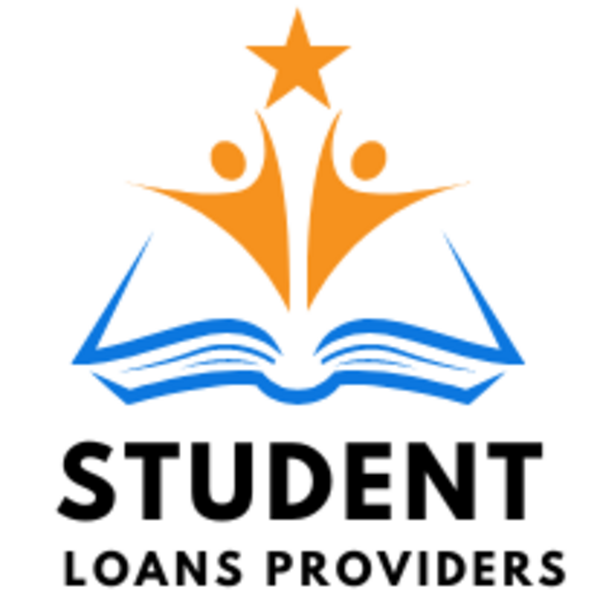Survivors’ and Dependents’ Educational Assistance Program
Explore educational assistance for survivors and dependents. Learn about benefits, eligibility, and how to apply for this valuable program

Discover income-driven repayment forgiveness options. Learn how to manage student loans effectively. Explore eligibility criteria and application process
As the burden of student loan debt continues to weigh heavily on millions of Americans, income-driven repayment (IDR) plans offer relief by tailoring loan payments to borrowers' income levels. In addition to providing manageable monthly payments, IDR plans can lead to loan forgiveness after a certain period, offering a light at the end of the tunnel for those struggling with student debt. In this comprehensive guide, we will delve into the intricacies of income-driven repayment forgiveness, exploring eligibility criteria, repayment options, tax implications, and strategies for navigating the process effectively.
Table of contents [Show]
Income-driven repayment plans are designed to alleviate the financial strain of student loan debt by adjusting monthly payments based on borrowers' discretionary income. These plans typically cap payments at a percentage of income, making them more affordable for borrowers facing financial challenges. Common types of IDR plans include Income-Based Repayment (IBR), Pay As You Earn (PAYE), Revised Pay As You Earn (REPAYE), and Income-Contingent Repayment (ICR).
Student loan forgiveness provides relief by canceling part or all of a borrower's student loan debt. Under income-driven repayment forgiveness, borrowers who make qualifying payments for a specified period (usually 20 to 25 years) may have the remaining balance of their loans forgiven. This forgiveness is available to borrowers enrolled in IDR plans who meet certain eligibility criteria, such as maintaining current payments and working in qualifying public service or nonprofit jobs.
Each income-driven repayment plan has its own eligibility requirements, repayment terms, and forgiveness timelines. It's essential for borrowers to compare the features of each plan and choose the one that best aligns with their financial situation and long-term goals. Factors to consider include repayment terms, monthly payment amounts, forgiveness timelines, and eligibility criteria.
To qualify for income-driven repayment forgiveness, borrowers must meet specific requirements, including:
Enrollment in an IDR Plan: Borrowers must be enrolled in an income-driven repayment plan and make qualifying payments for the required repayment period.
Qualifying Employment: Borrowers may need to work in qualifying public service or nonprofit jobs to be eligible for forgiveness. This requirement varies depending on the specific IDR plan.
Remaining Current on Payments: Borrowers must remain current on their loan payments and meet other program requirements throughout the repayment period.
Family size plays a significant role in determining monthly payments under income-driven repayment plans. Larger families may qualify for lower monthly payments, as discretionary income is calculated based on family size and income. Borrowers with dependents may benefit from reduced payments, making IDR plans more manageable for families facing financial challenges.
Income-driven repayment plans adjust monthly payments based on changes in borrowers' income. If a borrower's income increases or decreases, their monthly payment amount may change accordingly. This flexibility allows borrowers to maintain affordable payments even as their financial circumstances fluctuate, providing stability and flexibility in loan repayment.
Real-life stories of borrowers who have successfully navigated income-driven repayment forgiveness can provide inspiration and guidance for others facing student loan debt. Hearing about individuals who have achieved loan forgiveness through diligent repayment efforts and strategic planning can offer hope and encouragement to those on a similar journey.
Misconceptions about income-driven repayment forgiveness abound, leading to confusion among borrowers. Common myths include beliefs that forgiveness is automatic, that all loans are eligible for forgiveness, or that forgiveness is immediate. Clearing up these misconceptions is essential for borrowers to make informed decisions about their student loan repayment strategies.
Recertification is an essential aspect of income-driven repayment plans, as borrowers must update their income and family size annually to ensure accurate payment calculations. Navigating the recertification process involves submitting updated information on time and understanding how changes in income or family size may affect monthly payments.
While income-driven repayment forgiveness provides significant relief for borrowers, it's essential to understand the tax implications of forgiven loan amounts. Under current tax law, forgiven loan amounts may be considered taxable income, potentially resulting in a significant tax liability for borrowers. Planning for these tax consequences is crucial for borrowers seeking loan forgiveness.
Balancing student loan repayment with other financial goals requires careful planning and prioritization. Borrowers must weigh the benefits of income-driven repayment forgiveness against other financial priorities, such as saving for retirement, buying a home, or starting a family. Developing a comprehensive financial plan that addresses both short-term and long-term goals is essential for financial success.
Loan consolidation can impact eligibility for income-driven repayment forgiveness, as only Direct Loans are eligible for forgiveness under IDR plans. Consolidating loans may convert other types of federal loans, such as FFEL or Perkins loans, into Direct Loans, making them eligible for forgiveness. However, borrowers should carefully consider the implications of consolidation before proceeding.
Income-driven repayment forgiveness is not without its challenges and pitfalls. Common issues include administrative errors, delays in processing recertification documents, and misunderstandings about program requirements. Borrowers should stay vigilant and proactive in addressing any issues that arise to ensure successful participation in IDR plans.
While income-driven repayment forgiveness offers significant benefits for many borrowers, it may not be the best option for everyone. Alternative strategies for managing student loan debt include loan refinancing, accelerated repayment plans, and pursuing loan forgiveness through other programs, such as Public Service Loan Forgiveness (PSLF). Exploring these alternatives allows borrowers to choose the approach that aligns best with their financial goals.
The landscape of income-driven repayment plans is subject to change, with potential updates to program features, eligibility criteria, and forgiveness terms. Staying informed about policy changes and legislative developments is crucial for borrowers participating in income-driven repayment plans, as adjustments to the programs may impact their long-term financial strategies.
While income-driven repayment plans provide extended timelines for loan forgiveness, some borrowers may choose to accelerate their repayment to minimize interest accrual and achieve financial freedom sooner. Strategies for accelerating loan repayment under IDR plans include making additional payments, allocating windfalls to loan balances, and taking advantage of employer-sponsored repayment assistance programs.
Income-driven repayment plans can have varying effects on credit scores, depending on individual circumstances. While making consistent, on-time payments under IDR plans positively impacts credit scores, borrowers should be aware of potential credit score implications related to delinquencies, loan consolidation, and the overall management of student loan debt.
Accessing student loan counseling and assistance programs can provide valuable support for borrowers navigating income-driven repayment forgiveness. These programs offer guidance on repayment options, loan forgiveness eligibility, and strategies for managing student loan debt effectively. Seeking assistance from reputable counseling services ensures that borrowers make informed decisions about their financial futures.
The psychological impact of student loan debt can be significant, affecting borrowers' well-being and financial stress levels. Understanding the emotional aspects of student loan debt and forgiveness is crucial for developing coping strategies, maintaining mental health, and fostering a positive mindset toward financial goals.
Building a comprehensive financial plan around income-driven repayment involves considering various aspects of personal finance, including budgeting, savings, investments, and retirement planning. By integrating income-driven repayment into a broader financial strategy, borrowers can make informed decisions that align with their overall financial goals.
Income-driven repayment forgiveness offers a lifeline to borrowers struggling with student loan debt, providing a pathway to financial freedom. By understanding the intricacies of IDR plans, eligibility criteria, and forgiveness terms, borrowers can make informed decisions about their student loan repayment strategies. Navigating the complexities of income-driven repayment forgiveness requires diligence, proactive communication with loan servicers, and a comprehensive approach to financial planning. Through strategic decision-making and a clear understanding of the process, borrowers can pave the way toward a brighter financial future.
What is income-driven repayment forgiveness?
Income-driven repayment forgiveness is a federal program that forgives any remaining student loan debt after a certain period of time and qualifying payments under an income-driven repayment plan.
Who qualifies for income-driven repayment forgiveness?
Borrowers who make consistent payments under an income-driven repayment plan for the required number of years (usually 20 or 25 years) may qualify for forgiveness on the remaining balance of their student loans.
How do I apply for income-driven repayment forgiveness?
To apply for income-driven repayment forgiveness, you typically need to submit an application to your loan servicer. They will review your eligibility based on your payment history and other factors.
Which income-driven repayment plans are eligible for forgiveness?
Income-Driven Repayment (IDR) plans such as Income-Based Repayment (IBR), Pay As You Earn (PAYE), Revised Pay As You Earn (REPAYE), and Income-Contingent Repayment (ICR) are eligible for forgiveness.
Do I need to reapply for income-driven repayment forgiveness annually?
Yes, you need to recertify your income and family size annually to remain on an income-driven repayment plan and maintain eligibility for forgiveness.
Are there any taxes on the forgiven amount?
Yes, the forgiven amount under income-driven repayment plans is considered taxable income, which means you may owe taxes on the amount forgiven.
What happens if I miss a payment while on an income-driven repayment plan?
Missing payments can affect your eligibility for forgiveness. It's essential to make all required payments on time to remain eligible.
Can I qualify for income-driven repayment forgiveness if I'm in default on my loans?
Typically, borrowers in default are not eligible for income-driven repayment forgiveness. You'll need to rehabilitate your loans first.
Is there a cap on how much can be forgiven under income-driven repayment plans?
There is no cap on the amount that can be forgiven under income-driven repayment plans.
Can private student loans be forgiven through income-driven repayment plans?
No, income-driven repayment forgiveness is only available for federal student loans.
What happens if my income significantly increases while on an income-driven repayment plan?
If your income increases significantly, your monthly payments may also increase. However, your eligibility for forgiveness would remain based on your qualifying payments made.
Can I switch between different income-driven repayment plans?
Yes, you can switch between eligible income-driven repayment plans if your financial situation changes or if you find another plan better suited to your needs.
Do payments made under other repayment plans count toward forgiveness under income-driven plans?
Generally, only payments made under an income-driven repayment plan count toward forgiveness.
What happens if I consolidate my loans while on an income-driven repayment plan?
Consolidating your loans may reset the clock on qualifying payments for forgiveness. It's essential to consider the implications before consolidating.
Are there any professions that qualify for loan forgiveness programs beyond income-driven repayment?
Yes, certain professions such as teachers, nurses, and public servants may qualify for loan forgiveness through specific programs like Public Service Loan Forgiveness (PSLF).
Explore educational assistance for survivors and dependents. Learn about benefits, eligibility, and how to apply for this valuable program
Discover the benefits of the Montgomery GI Bill for military service members. Get education and training assistance. Learn more now
Unlock your future with the Post 9/11 GI Bill. Get education benefits for veterans. Pursue your dreams with tuition, housing, and more covered

